ARTH 17th century: Spain & Flanders
1/14
There's no tags or description
Looks like no tags are added yet.
Name | Mastery | Learn | Test | Matching | Spaced |
|---|
No study sessions yet.
15 Terms
17th-century Spanish painting influences & connections
influence of Caravaggio’s (Italy) tenebrism (deep darks with bright highlights). Links to Northern (Flemish) art, mainly through the work of the cosmopolitan Flemish painter and diplomat Peter Paul Rubens—who also produced work for the Spanish court. These connections between Spain and countries as far away as Italy and Flanders are rooted in the political geography of Europe in the 17th century.
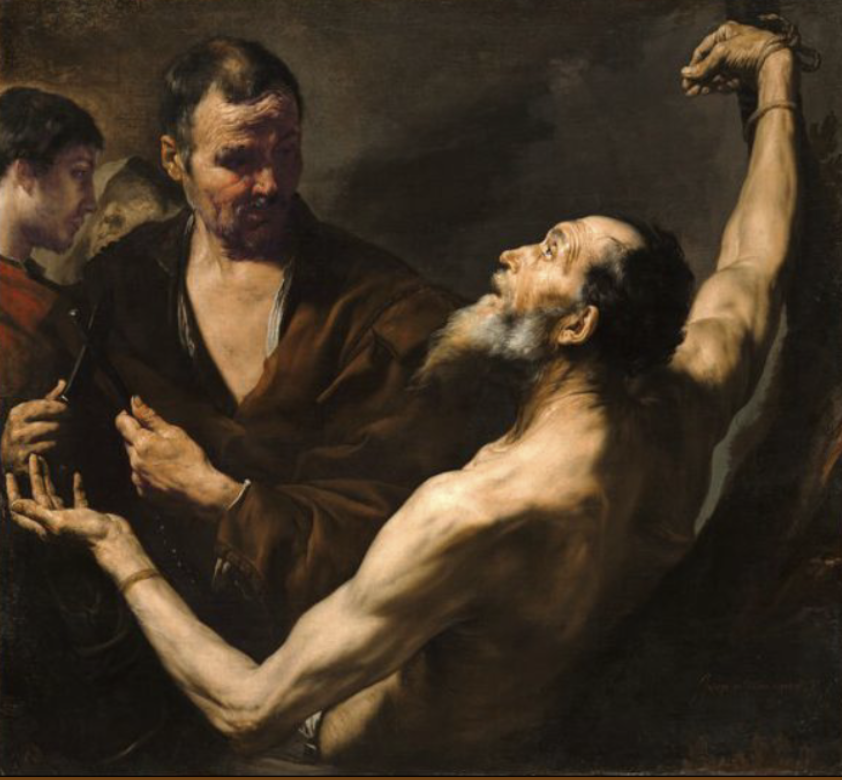
Jusepe de Ribera, Martyrdom of St. Bartholomew, 1634. Oil on canvas
example of Spanish 17th C. Art adopting tenebrism from Caravaggio’s. large figures depicted. St. Bartholomew was martyred as his skin was peeled off. white is falling on St. Barth’s face as he looks to the heaven. St. Barth’s wrists are bound so he can’t escape.
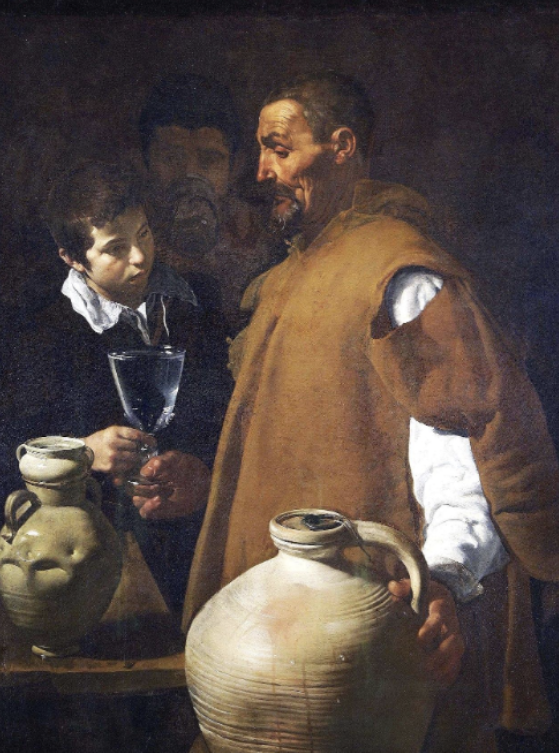
Diego Velázquez, Water Seller of Seville, c. 1619. Oil on canvas
example of Spanish 17th C. Art adopting tenebrism from Caravaggio’s. famous Spanish 17th C. painter. painter to the kind. depicts someone who goes around selling fresh water. shows Velazques’s attention to detail. shows the rough cloth the water seller is wearing, the coils of clay in the pot, and the clear glass goblet.
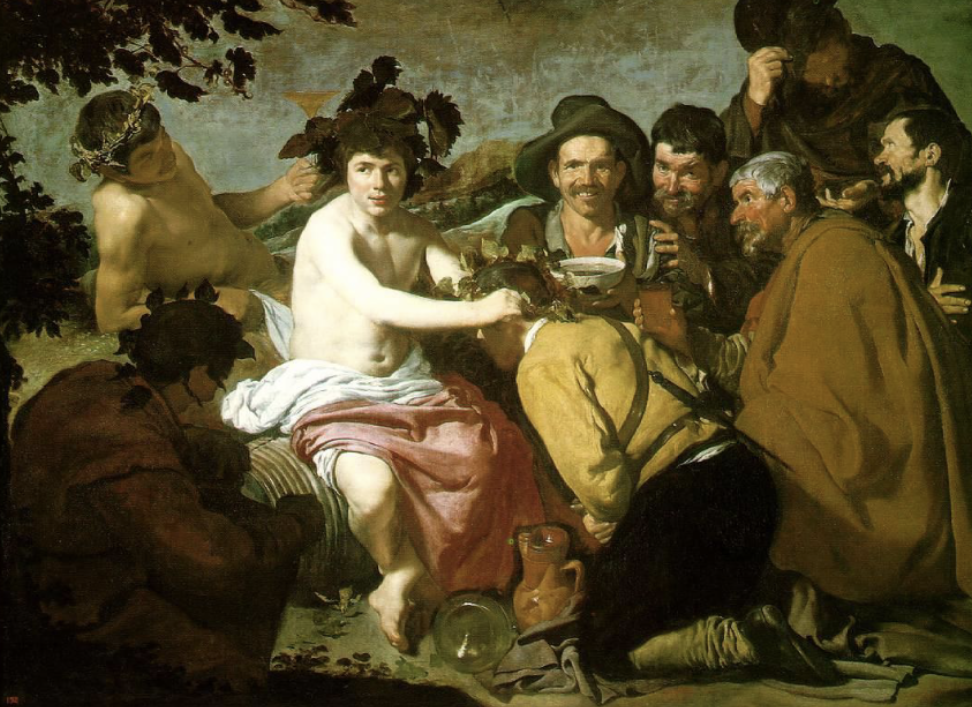
Diego Velázquez, Los Borrachos (The Drunkards), c. 1628–29
example of Spanish 17th C. Art adopting material from Caravaggio. Bacchus (god of wine) is possible depicted. the painter used live models as you can see by the immense details in their faces. bares similarities to the water seller. he painted the common people of Spain.
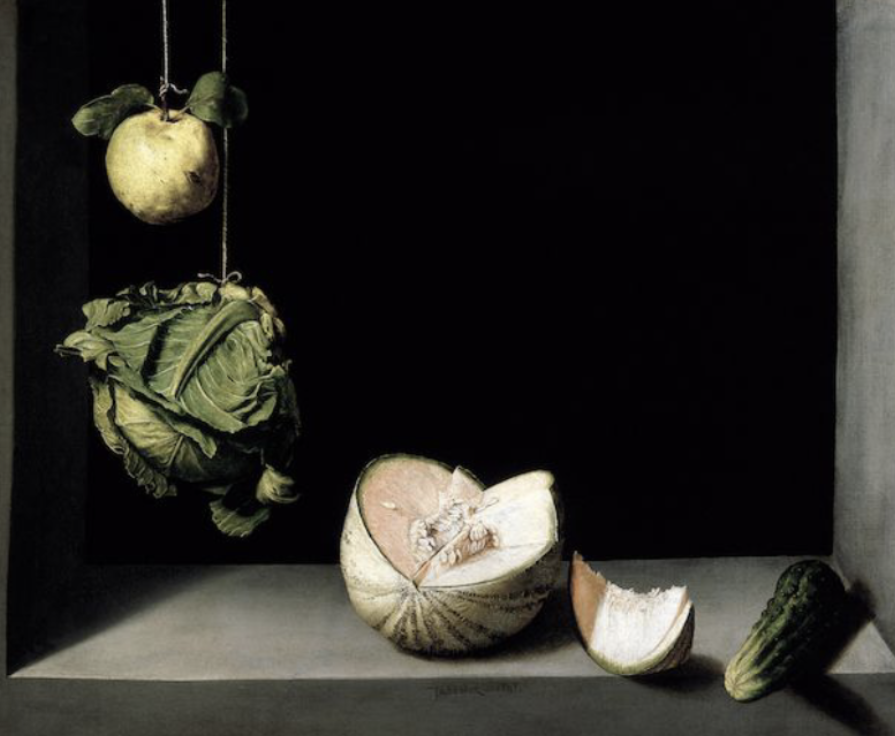
Juan Sánchez Cotán (Spain), Still Life with Quince, Cabbage, Melon, and Cucumber, c. 1602 oil on canvas San Diego Mus. of Art
example of Spanish 17th C. Art adopting tenebrism from Caravaggio’s. Cotán is known for his spare still-life paintings. Type of Spanish still-life called a “bodegón” for its arrangement of simple foods. In 17C Spain, produce was hung with twine to prevent it from rotting Meaning? Possibly about drawing geometric shapes + Objects are displayed in advancing planes. Astronomy? Navigating via the use of celestial bodies
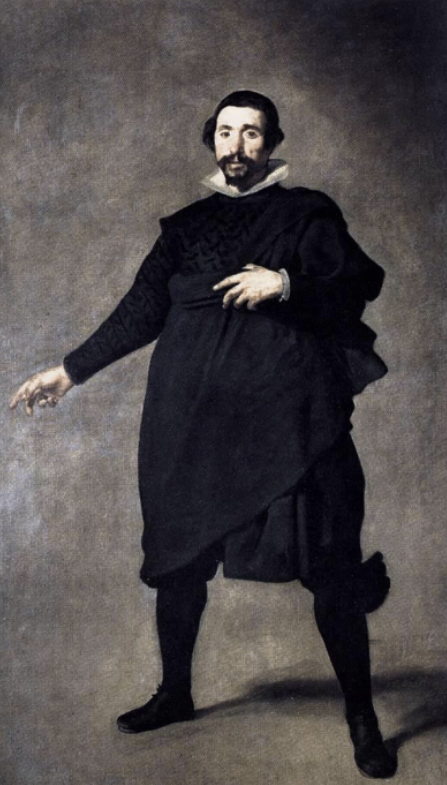
Velázquez, The Buffoon Pablo of Valladolid, 1636-37
example of Spanish 17th C. Art adopting techniques Caravaggio’s. painted similarly to Velázquez’s portrait of King Philip IV. the background is very flat, but the shadow depicts the man is standing on something.
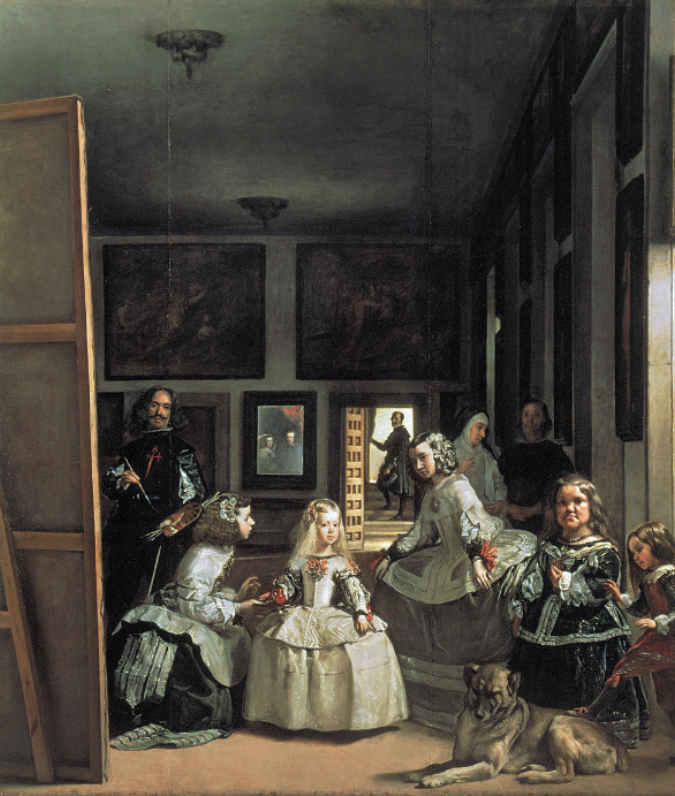
Velázquez, Las Meninas (The Maids of Honor), 1656. Oil on canvas
example of Spanish 17th C. Art adopting techniques Caravaggio’s. A complicated painting that questions the divine right of kings. Explores the connection between vision, knowledge, and power. depicts Velázquez’s studio in the palace with his paintings in it. depicts the young princess with her servants and dog. on back of wall is painting that is finished but some argue it is a radical painting as it has a connection between vision, power, etc. Spanish King was an absolute monarchy. the king’s will is law as they claimed their crown was given to them by god.
17th-century Flemish painting
Flanders belonged to Spain in the 17thC, so it was a Catholic country. Two influences on 17C Flemish painting: Italian baroque: theatrical, flamboyant. 16thC Venetian painters: colorful palette, loose brushwork. The most important, productive, and successful of the 17thC Flemish painters is Peter Paul Rubens, who painted for wealthy & powerful patrons across Europe
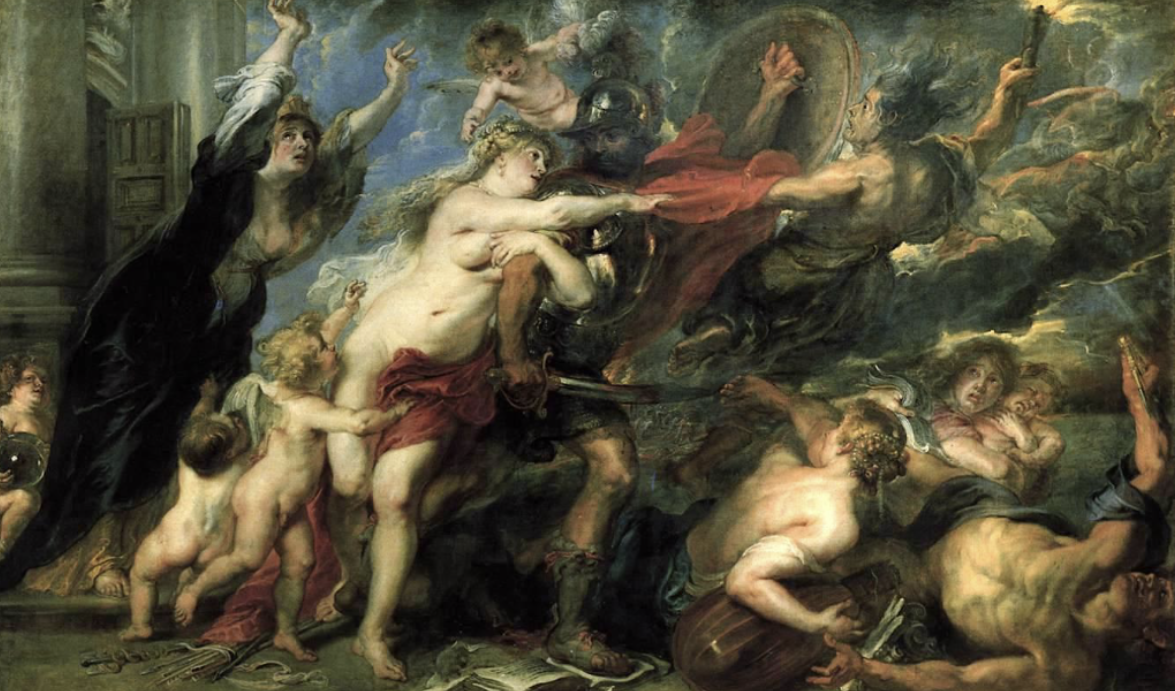
Peter Paul Rubens, The Consequences (Horrors) of War, 1637–38. Pitti Palace, Florence
example of Flemish baroque painting. most famous 17th C. Flemish painting. depicts Ares god of war and Venus goddess of love. influenced by Italian baroque.
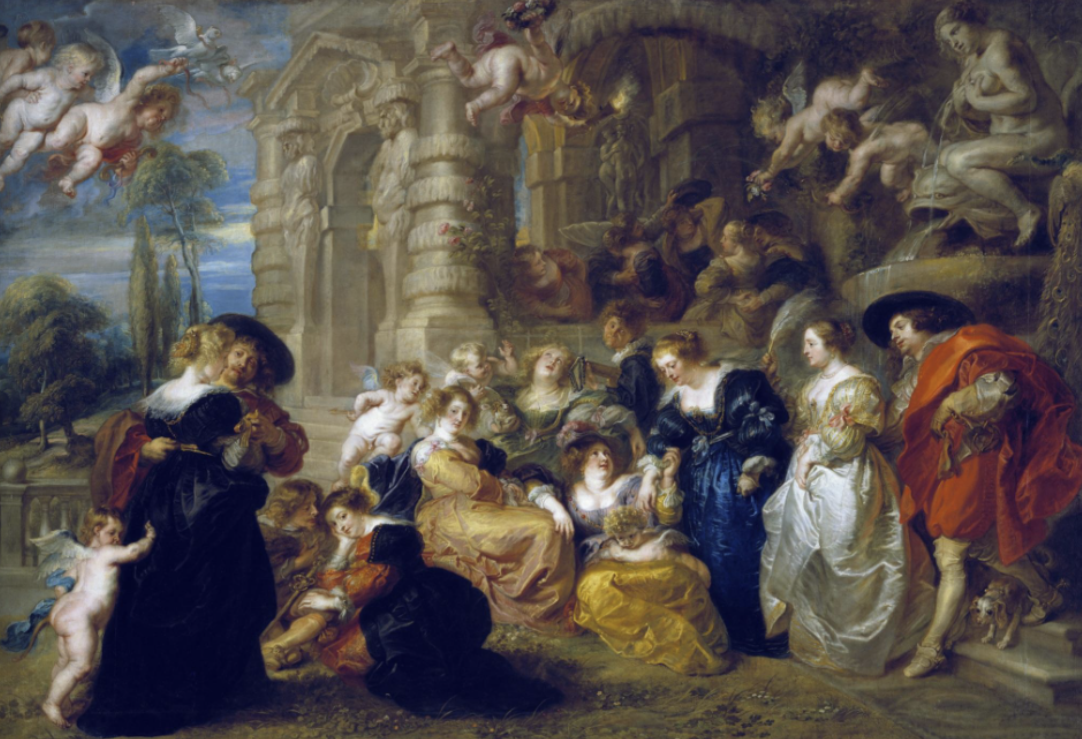
Rubens (Flanders), The Garden of Love, 1630–35.
example of Flemish baroque painting. most famous 17th C. Flemish painting. genre scene (scene of daily life with anonymous figures) An imaginary scene of aristocratic cultured leisure. Rubens’ characteristic loose brushwork & sturdy figures, use of color. One of the figures looks out at us
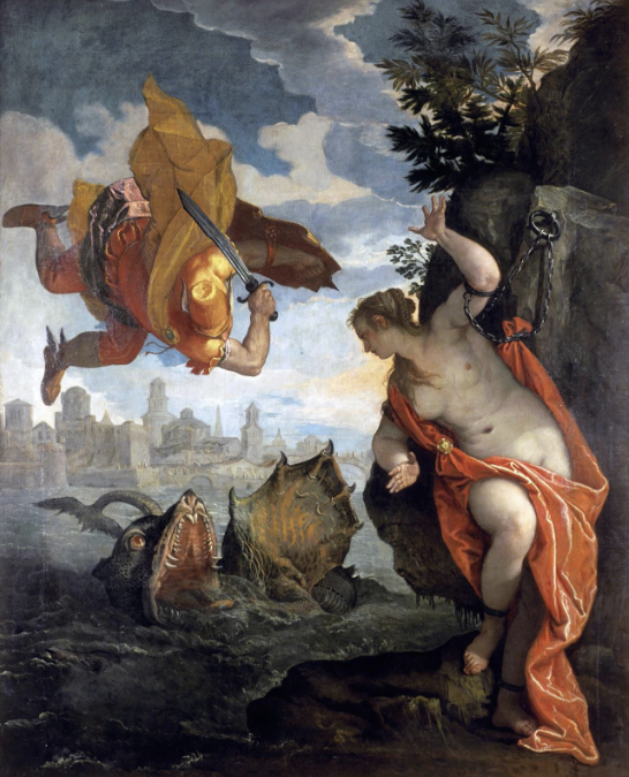
Paolo Veronese, Perseus Rescuing Andromeda, c. 1575–80 Musée des Beaux-Arts
example of Flemish baroque painting. More scenes from classical mythology occur in 16thC Venetian painting than in High Renaissance Florence and Rome. quality associated with 16thC Venetian painting: sprezzatura (artists worked hard to make it look like they’d nonchalantly dashed off their paintings)
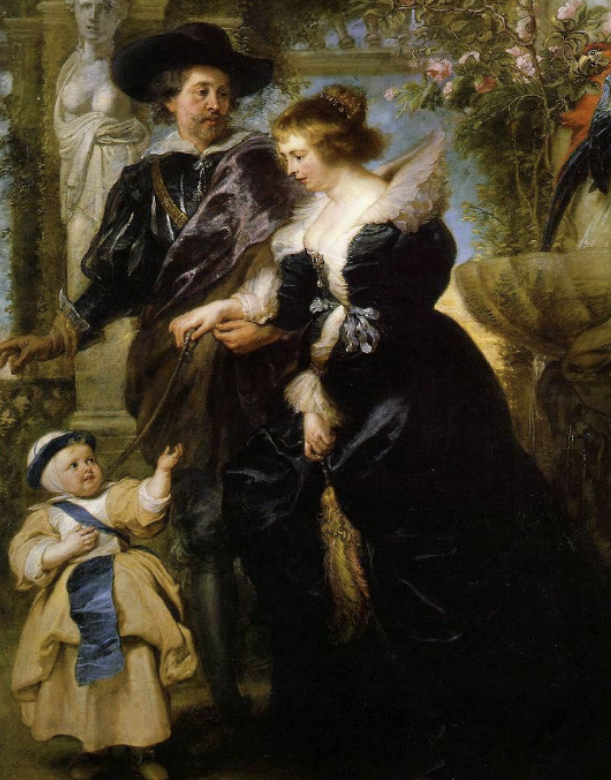
Peter Paul Rubens, Self-Portrait with His Wife Helena Fourment and Son Peter Paul, 1639
example of Flemish baroque painting. This self-portrait falls under the category of “artist as aristocrat,” where the painter is aspiring to be a member of the social class for whom he works Helena Fourment was Rubens’ second wife; the portrait of Rubens in the textbook is of him with his first wife. In both portraits, he depicts himself and his wife as aristocrats. A more relaxed portrait—Expresses nonchalance
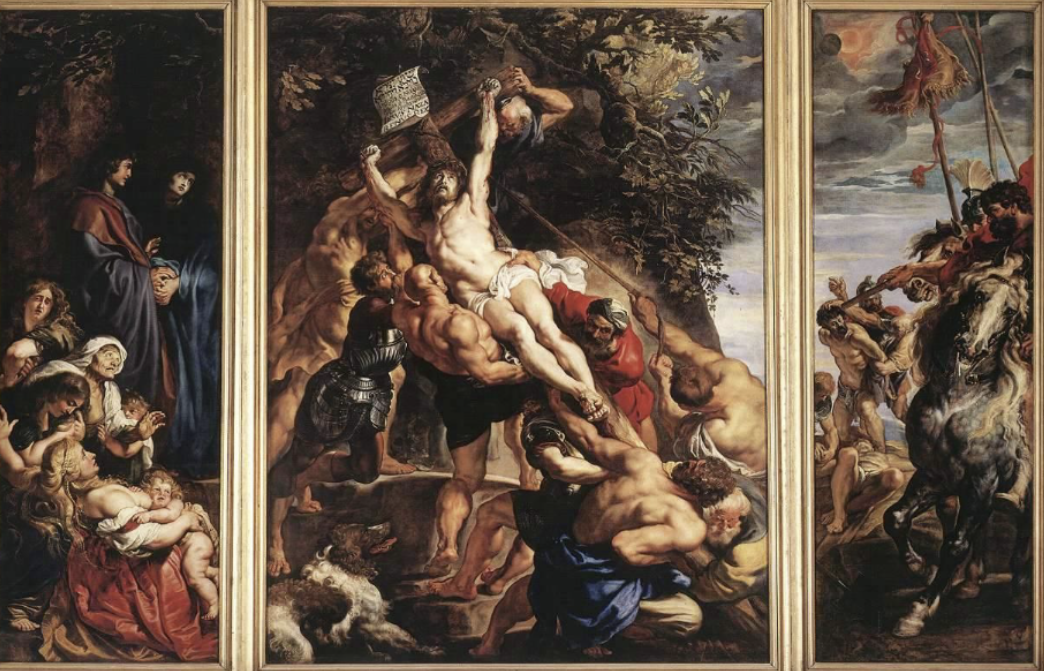
Rubens, Elevation of the Cross, triptych altarpiece, Antwerp Cathedral, Antwerp, Belgium, 1610.
example of Flemish baroque painting. imagines a triumphant (rather than a suffering) Christ on the cross. Christ looks upwards to heaven for solace.
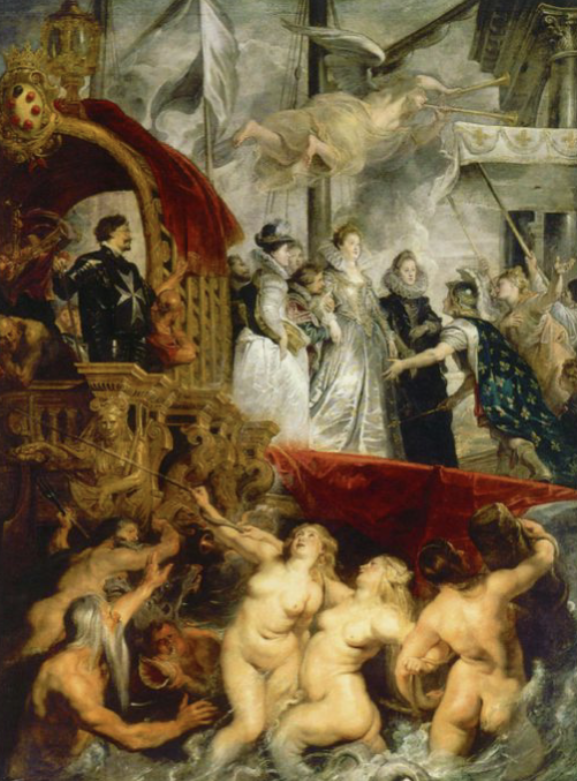
Rubens, Arrival of Marie de’ Medici at Marseilles, 1622–25. From a series of 21 painting
example of Flemish baroque painting. Marie de’ Medici was the mother of the French king Louis XIII. He’d had her exiled for political intrigue/meddling and then welcomed her back in 1621. She commissioned this highly self-flattering painting cycle from Rubens in celebration of her return.
Anthony van Dyck Portrait of Charles I at the Hunt 1635
example of Flemish baroque painting. Student and studio assistant of Rubens. Makes his career in England as portraitist to the aristocracy and monarchy. Portrays the monarchy as a polished gentlemen